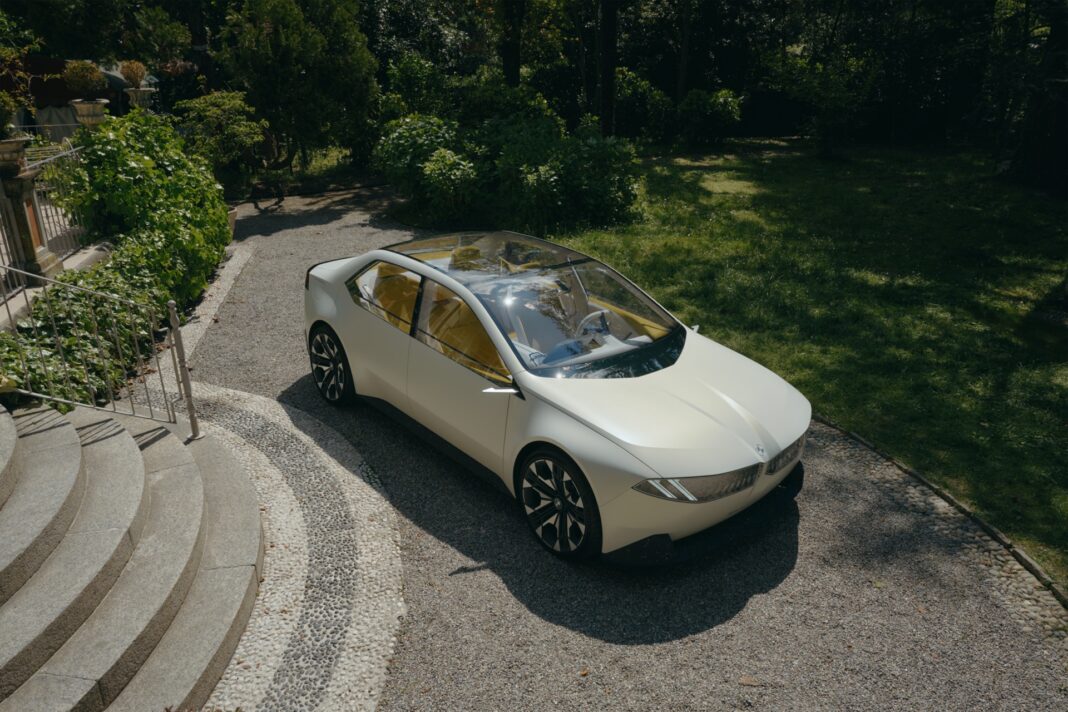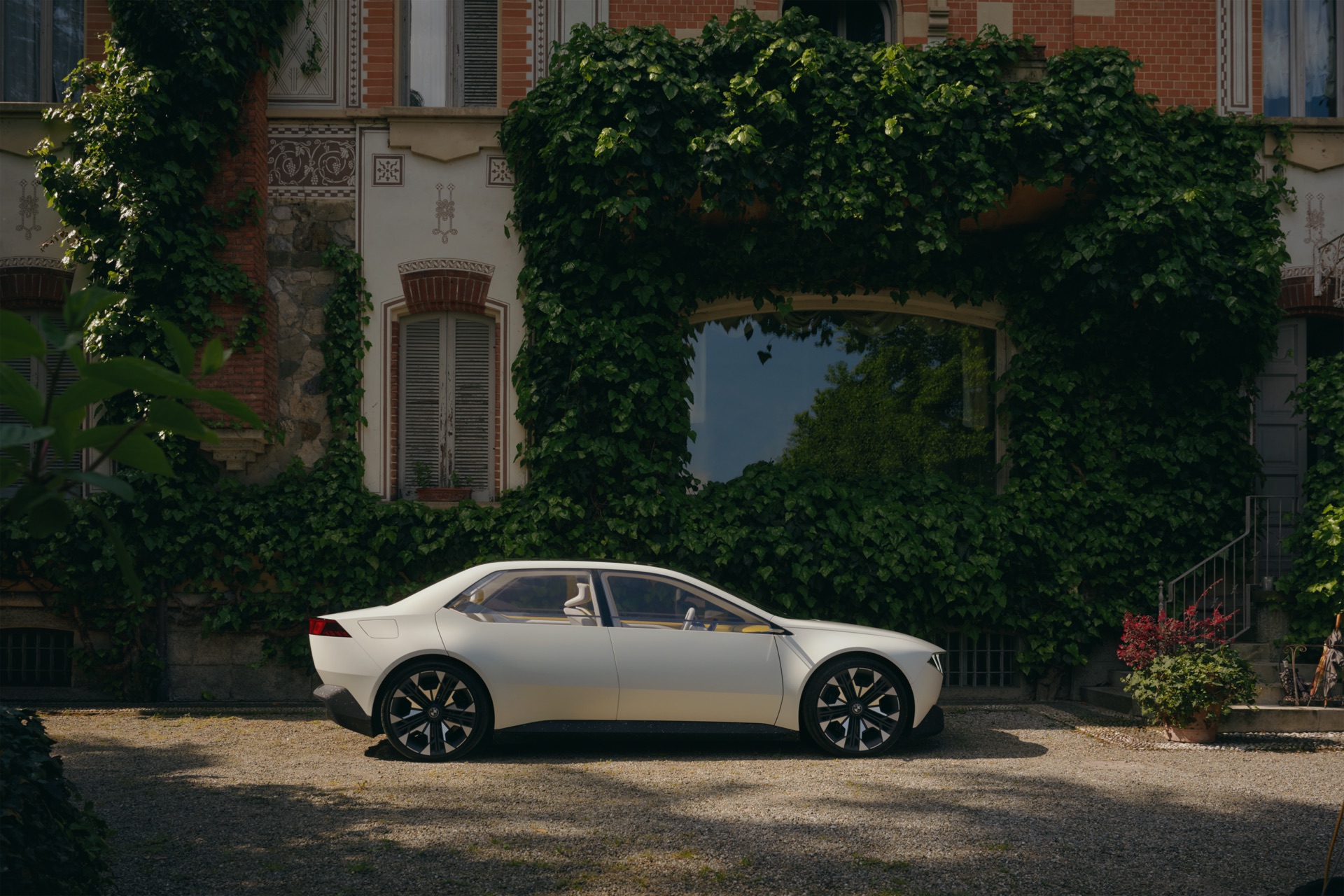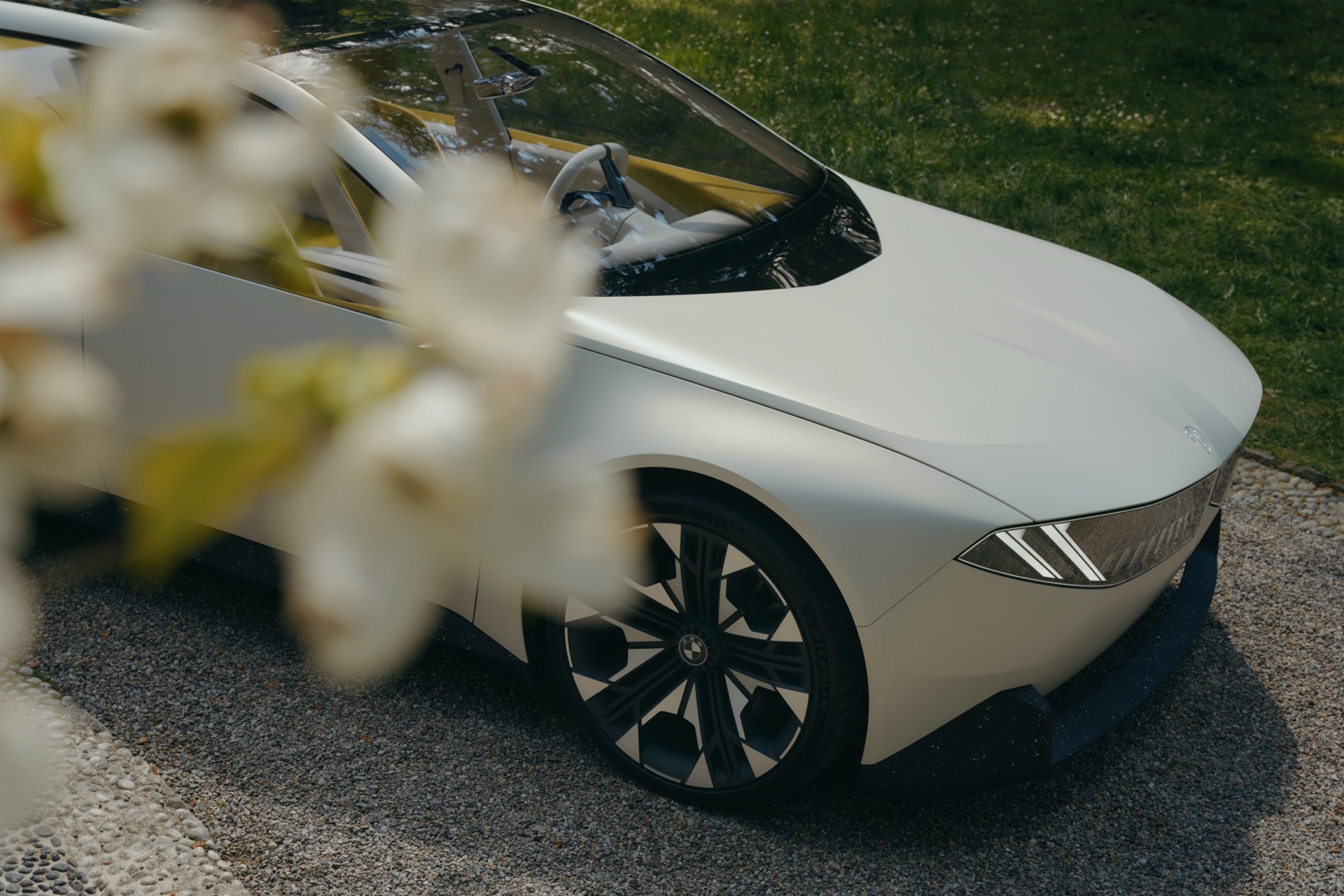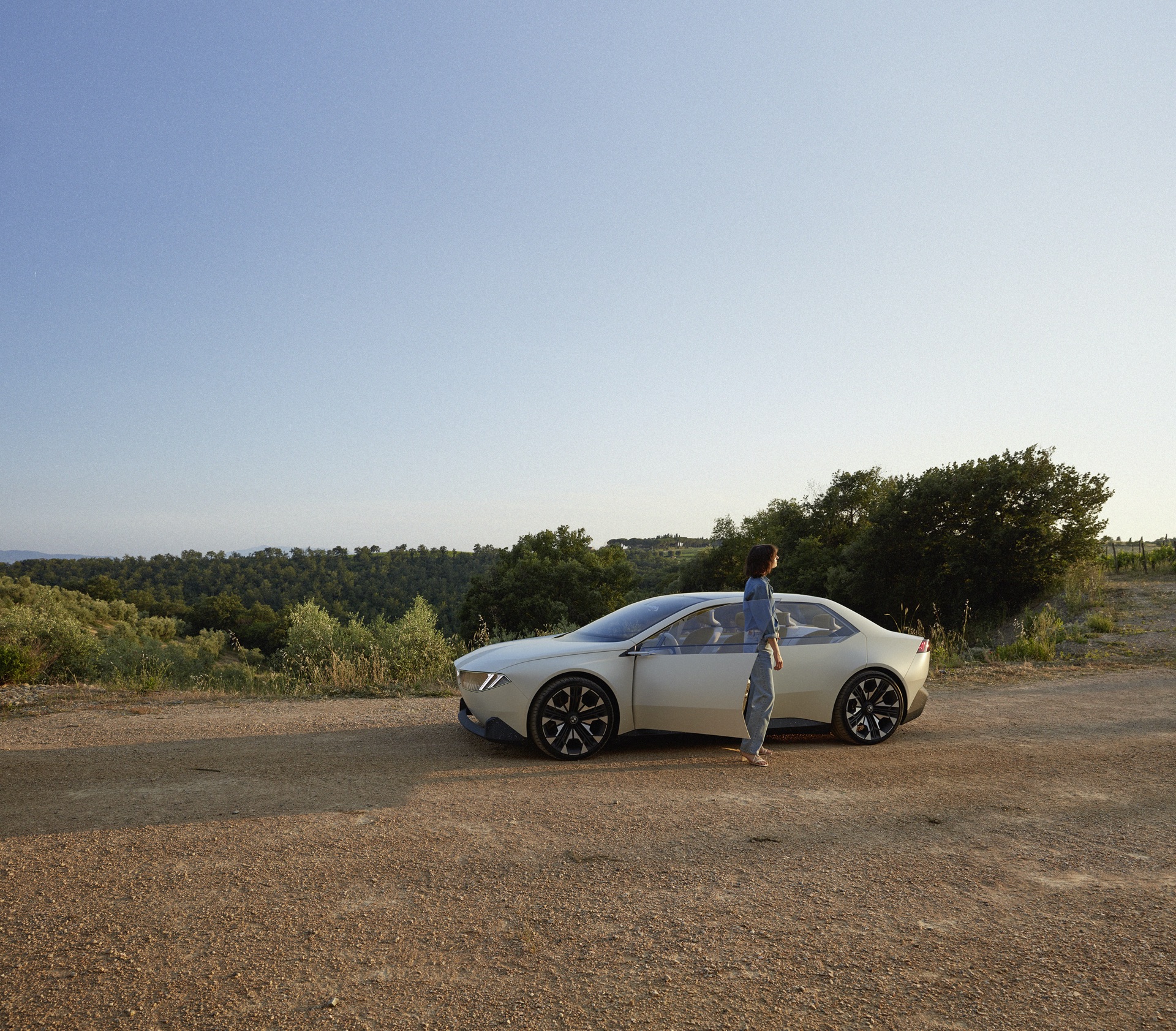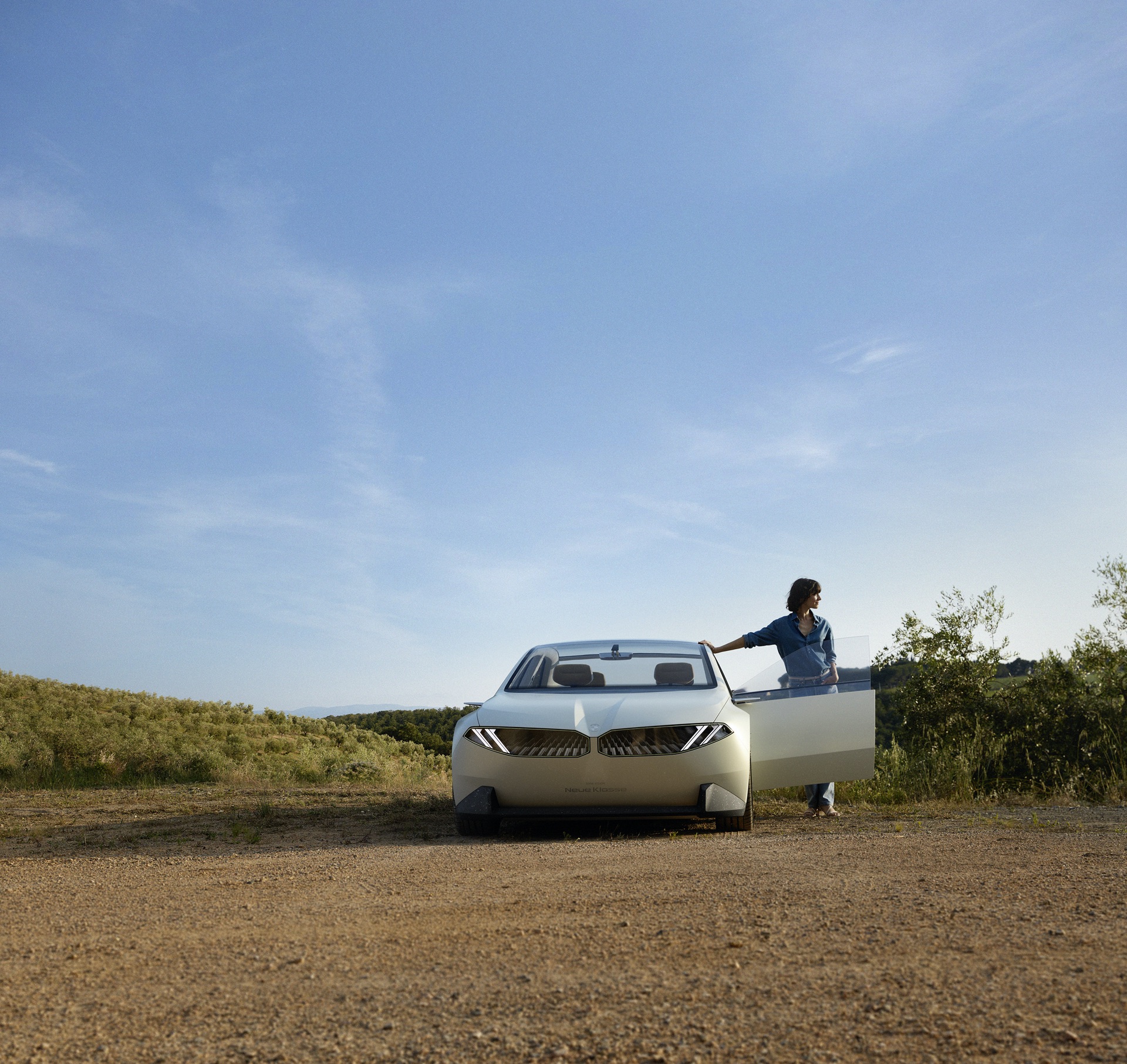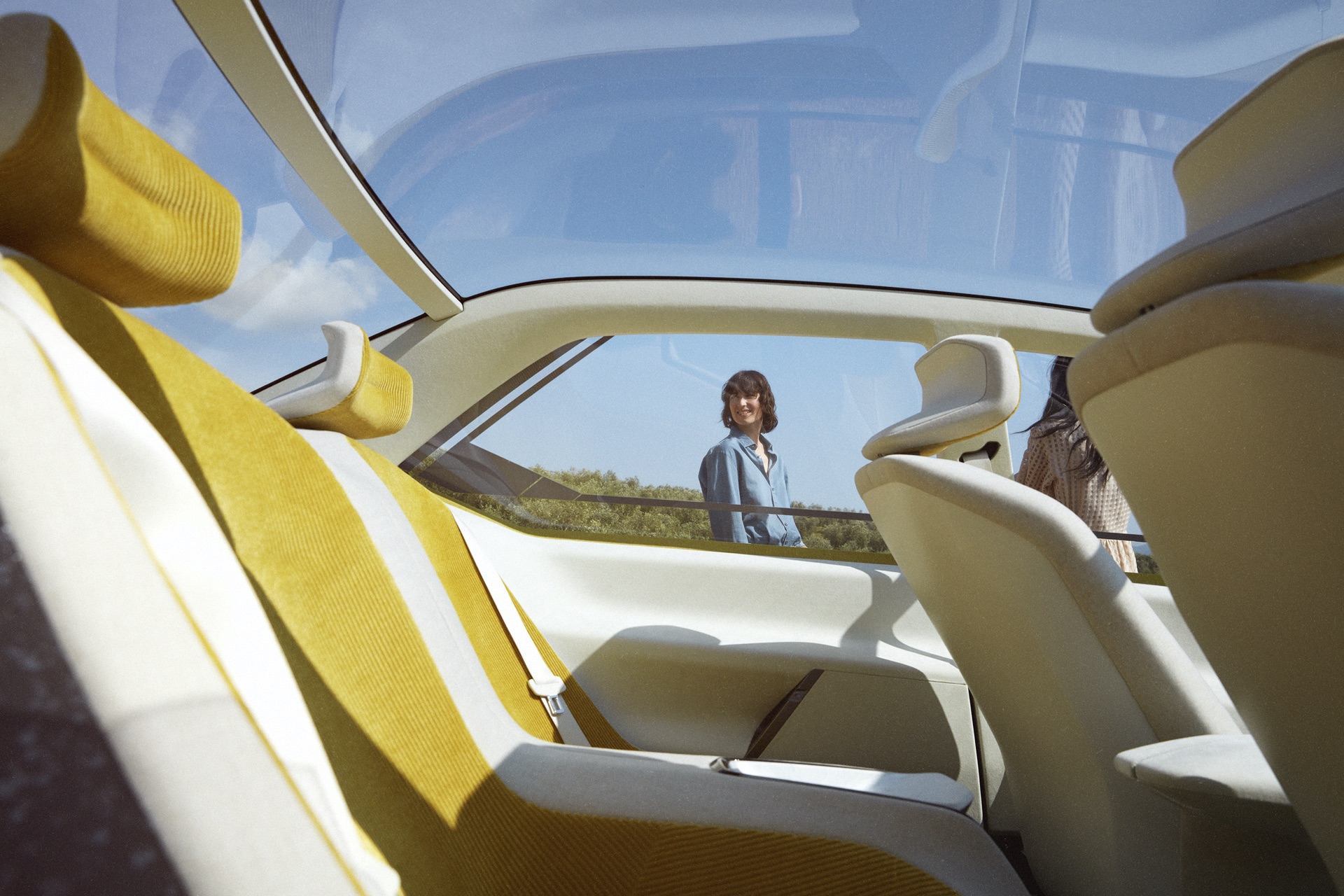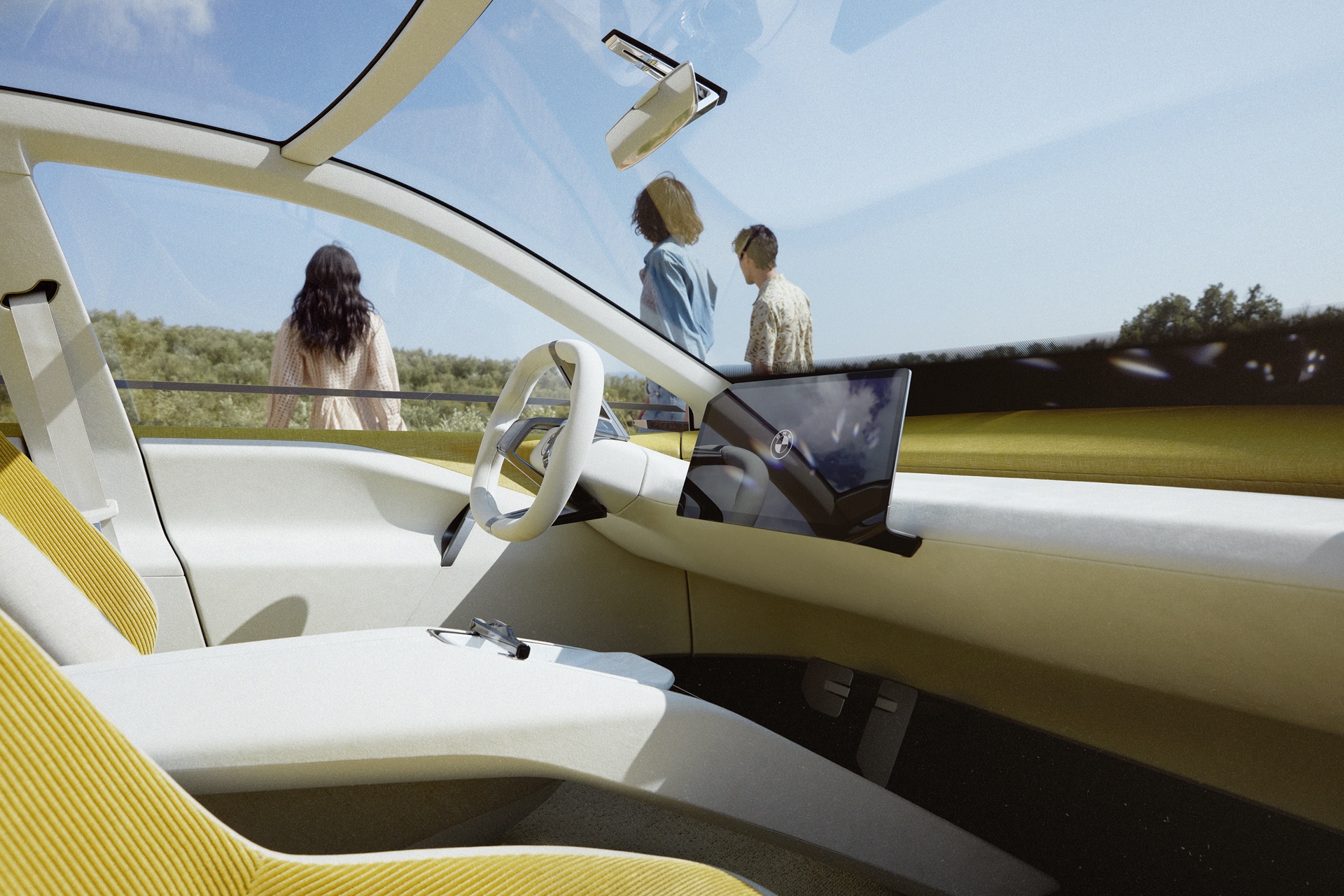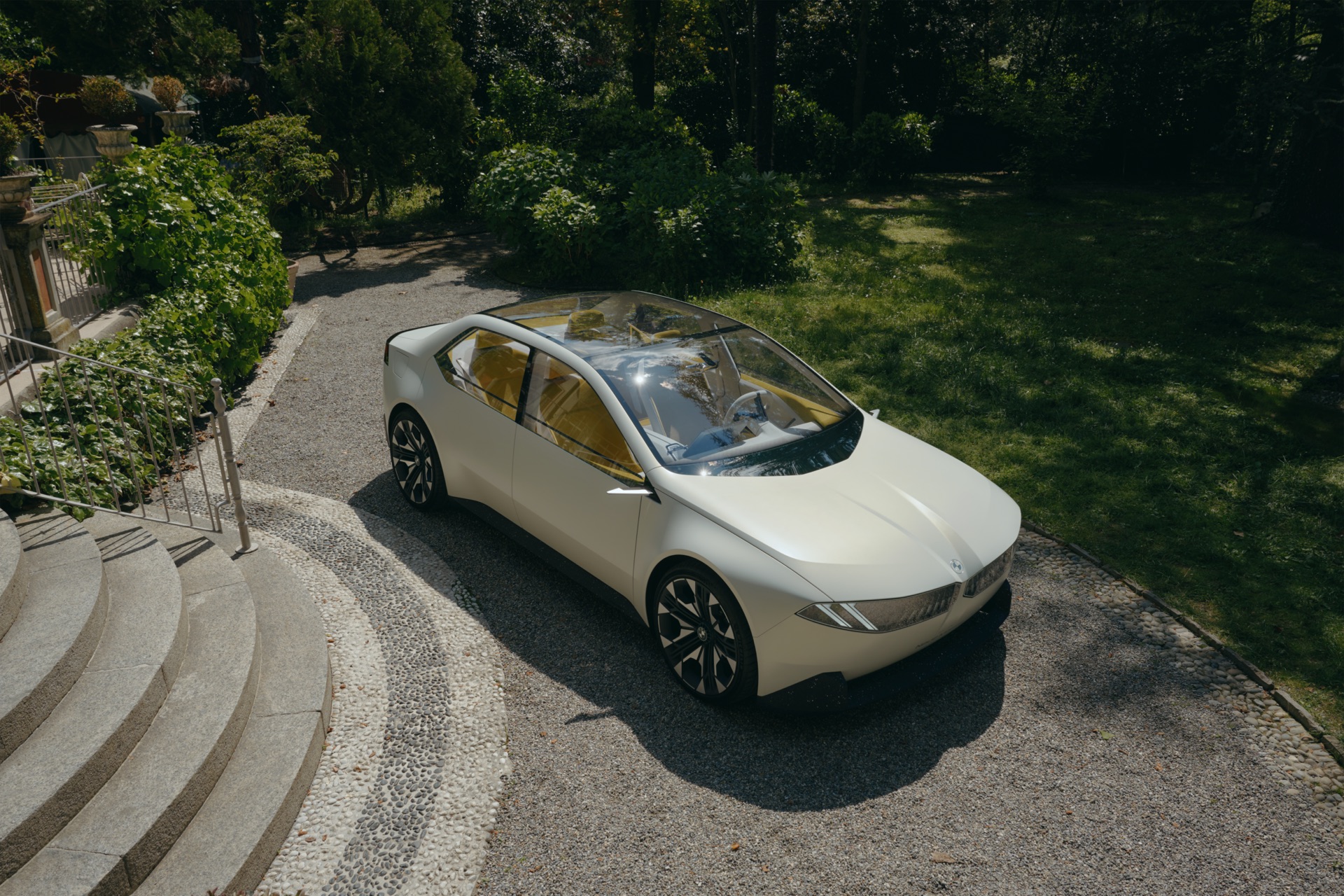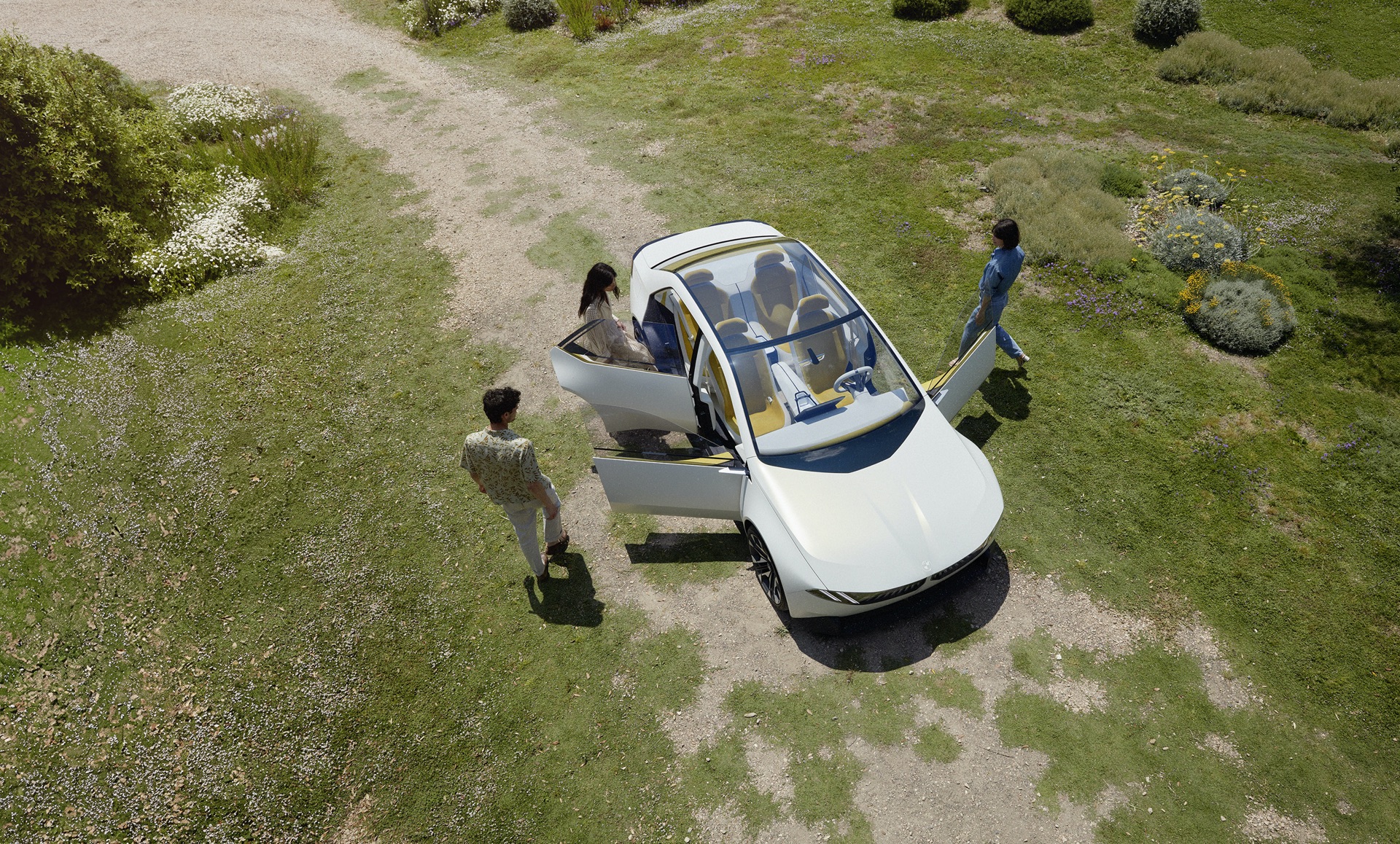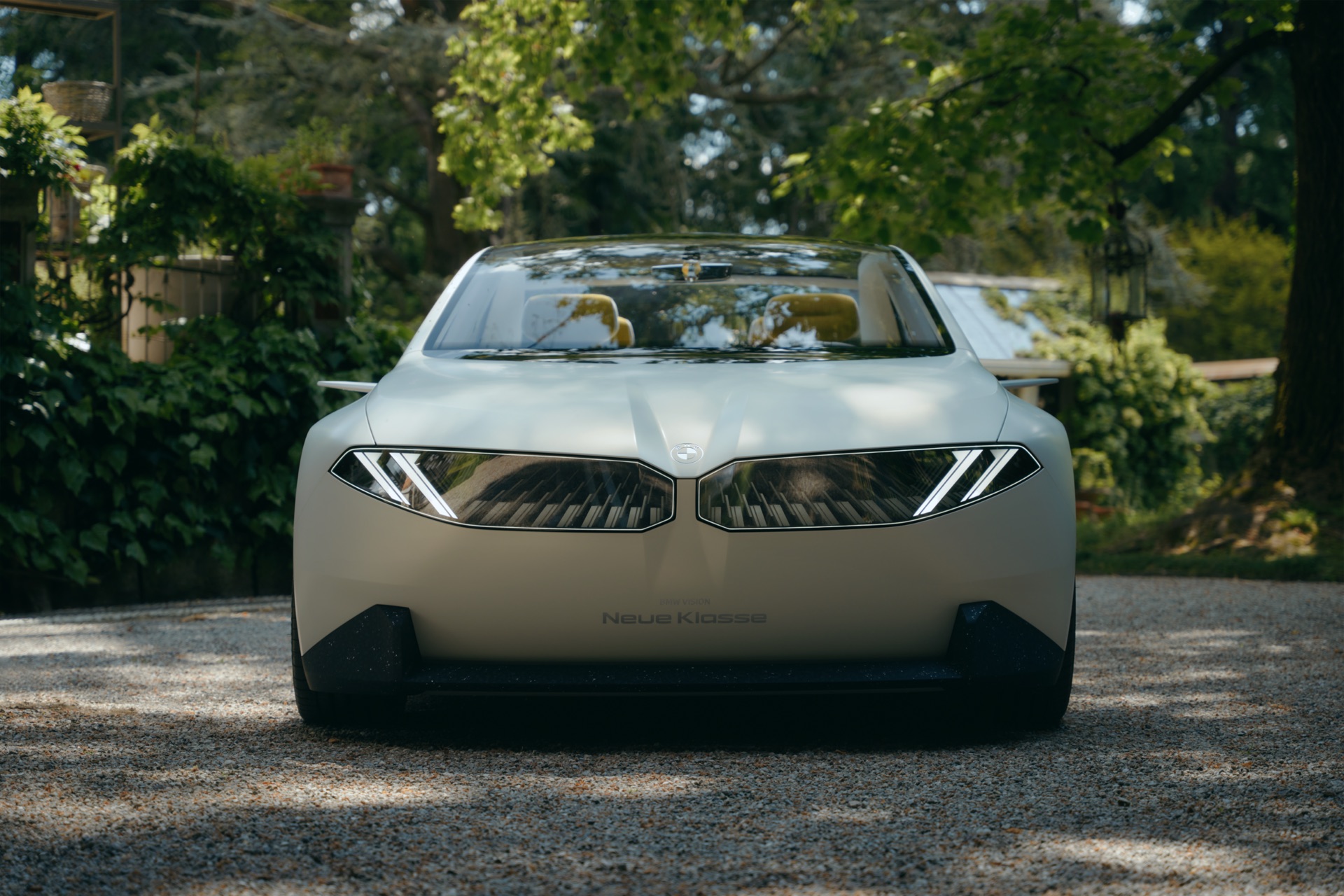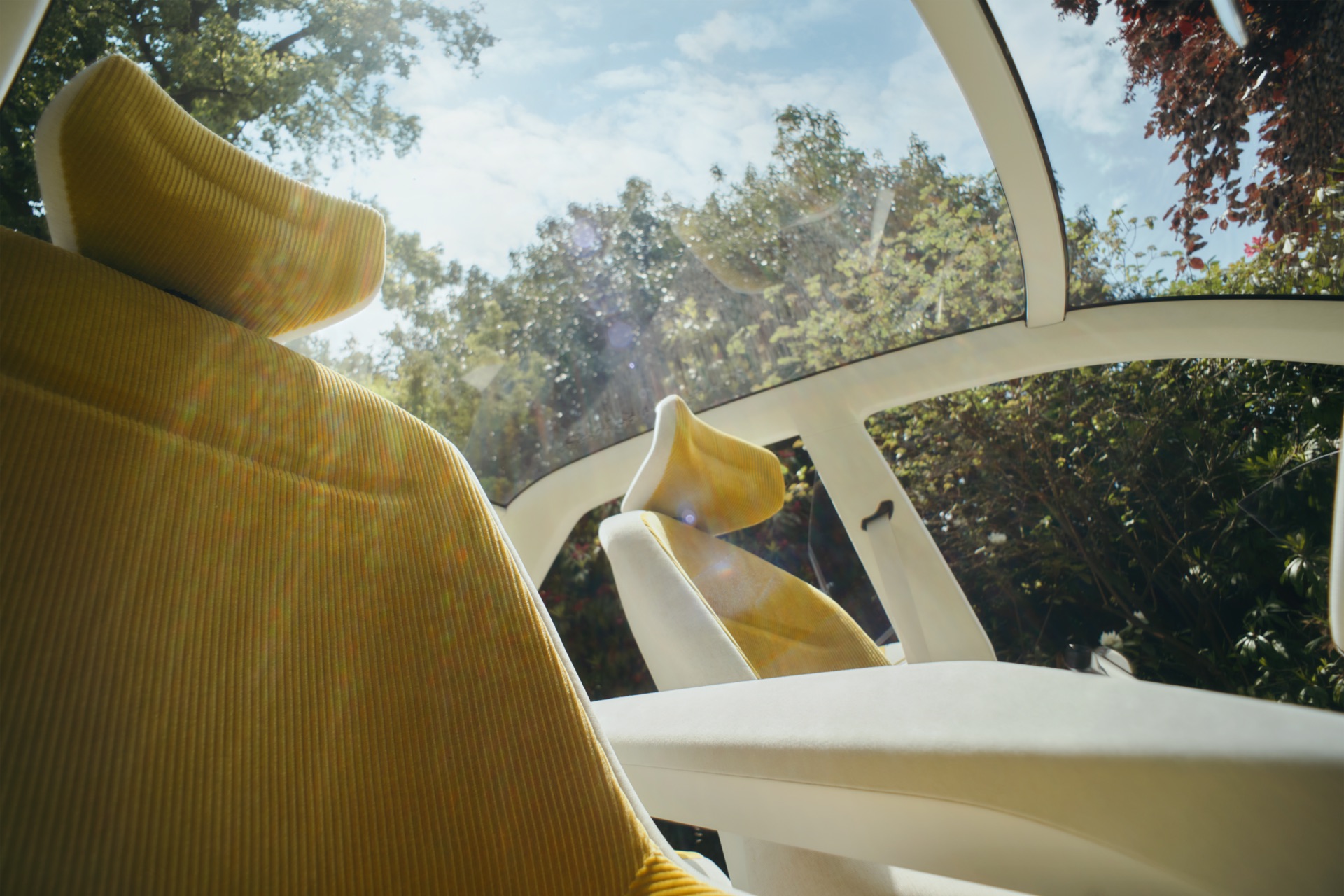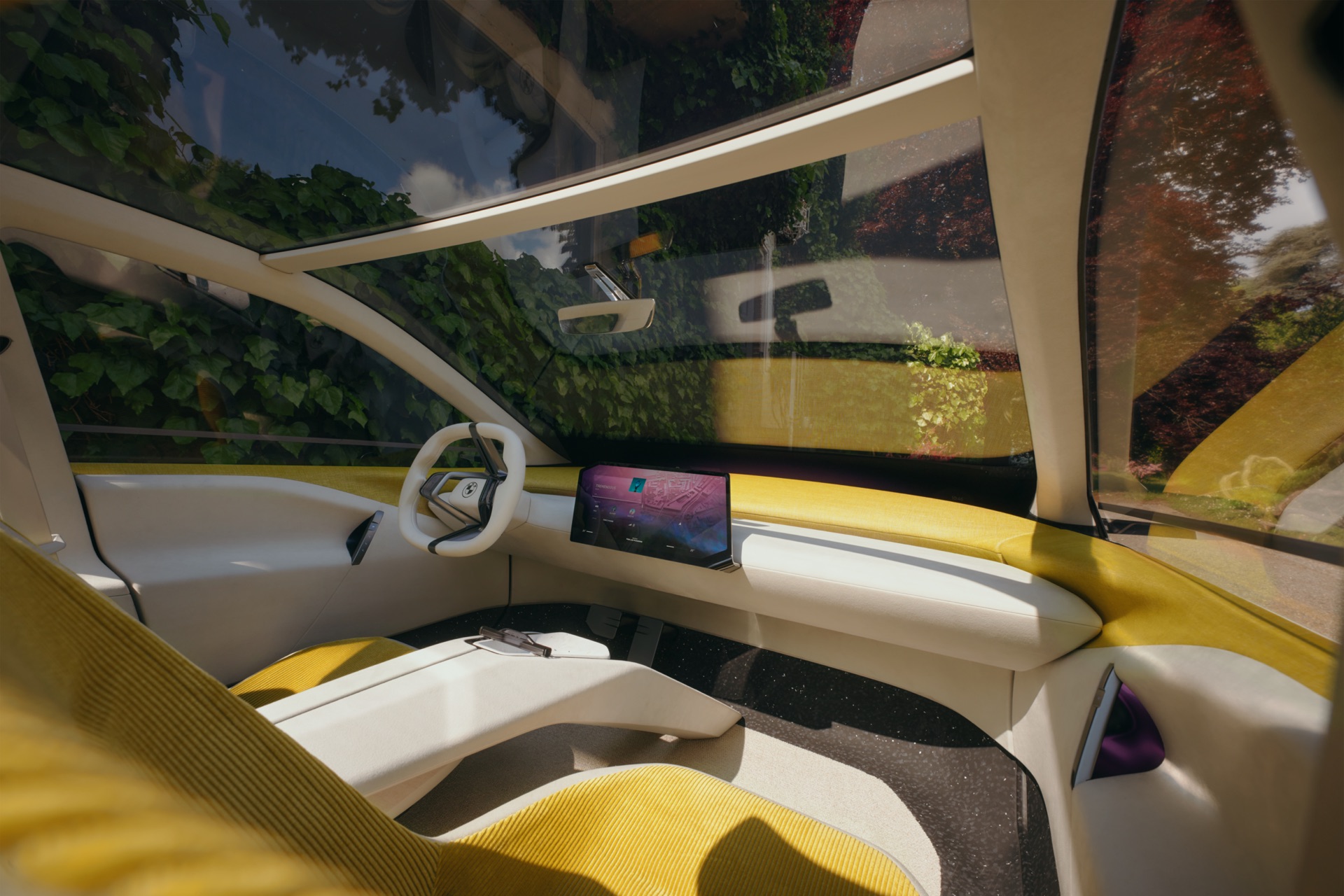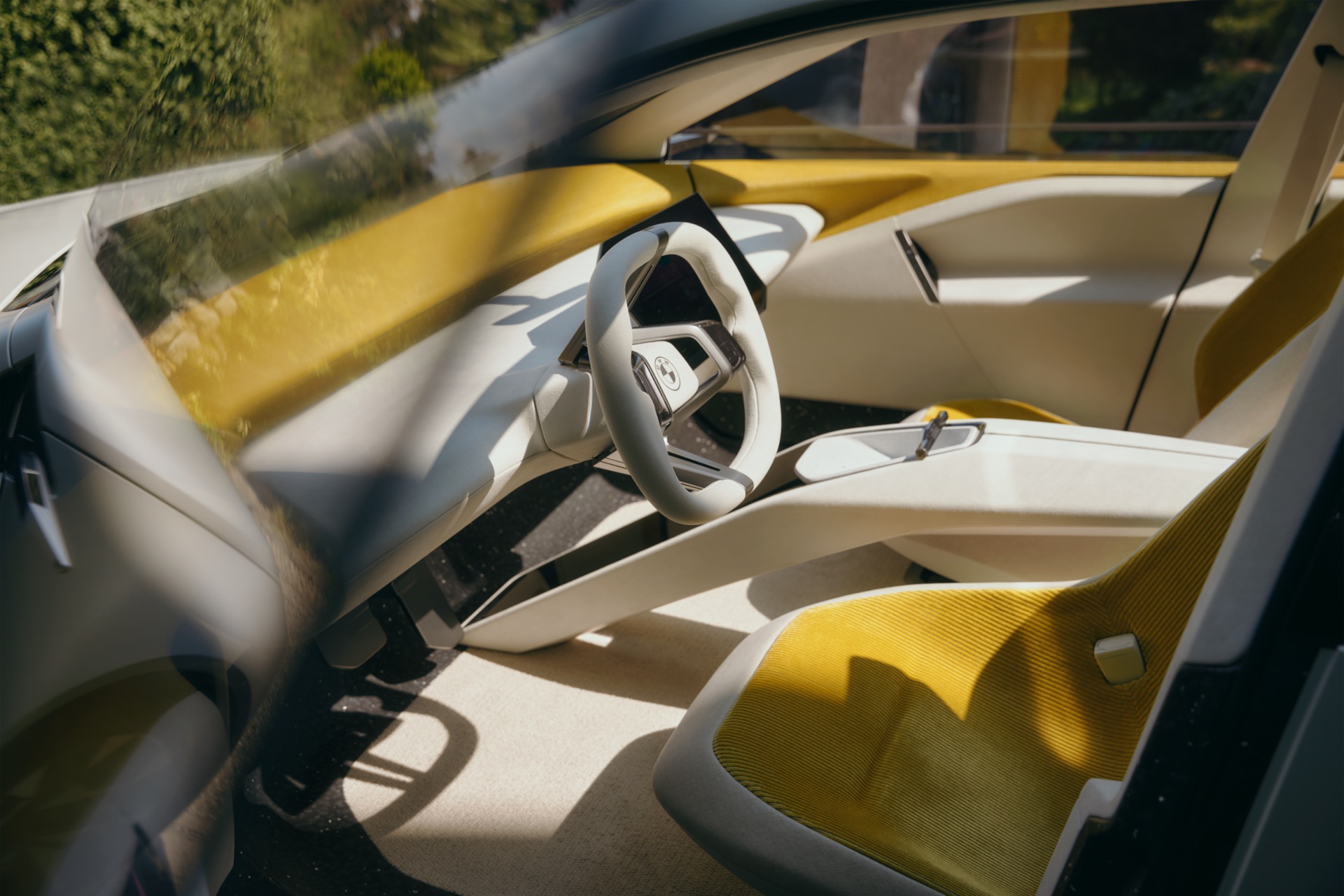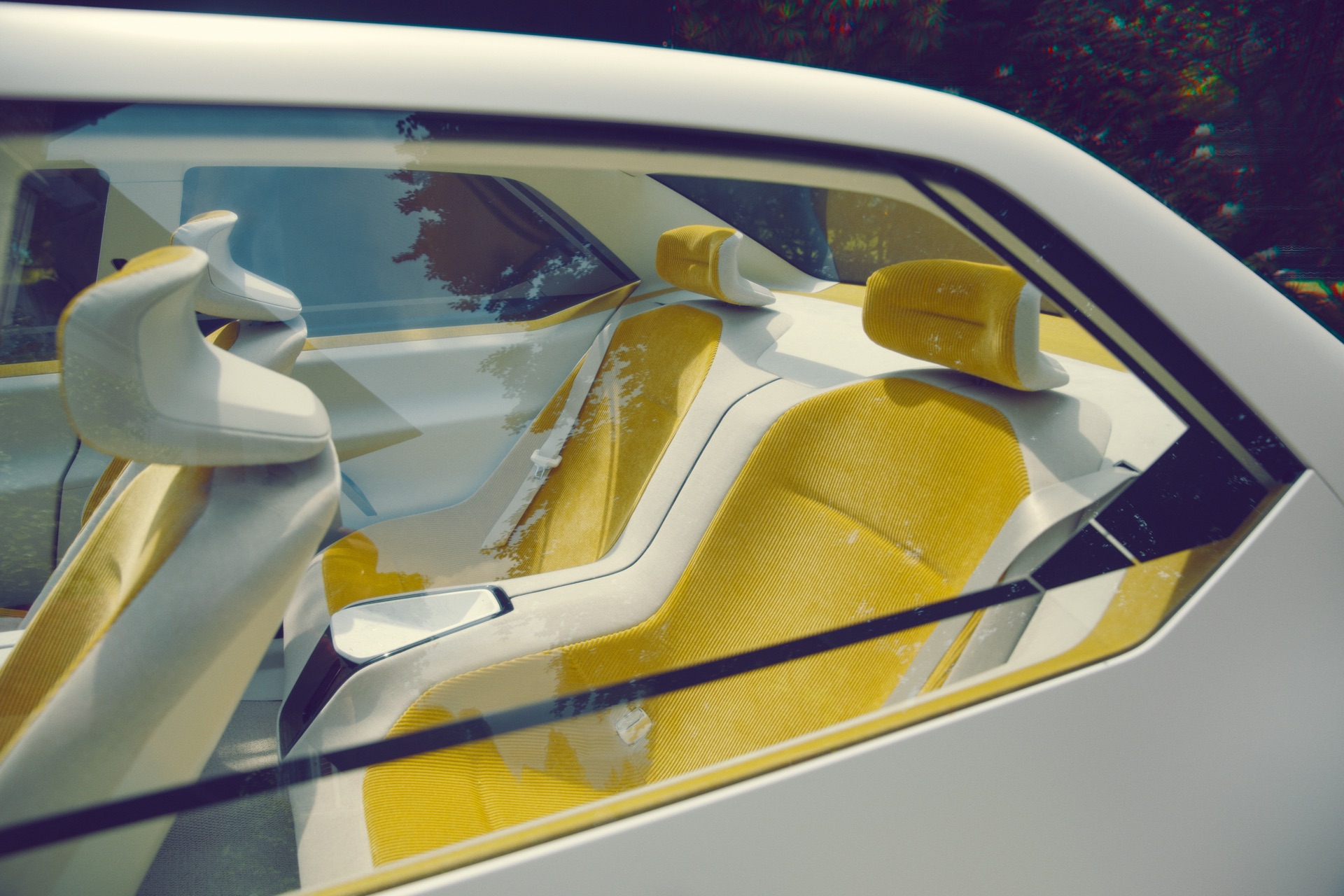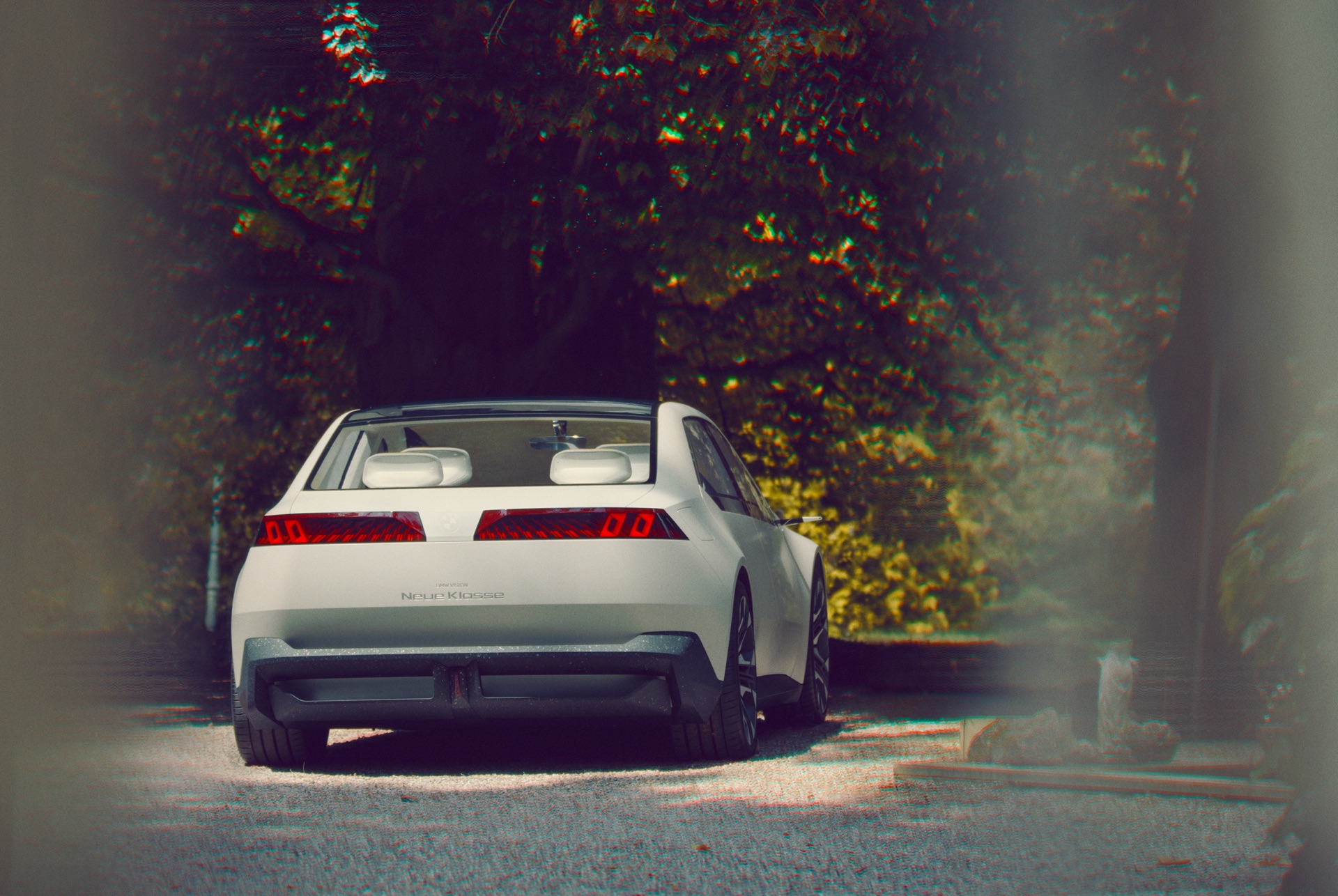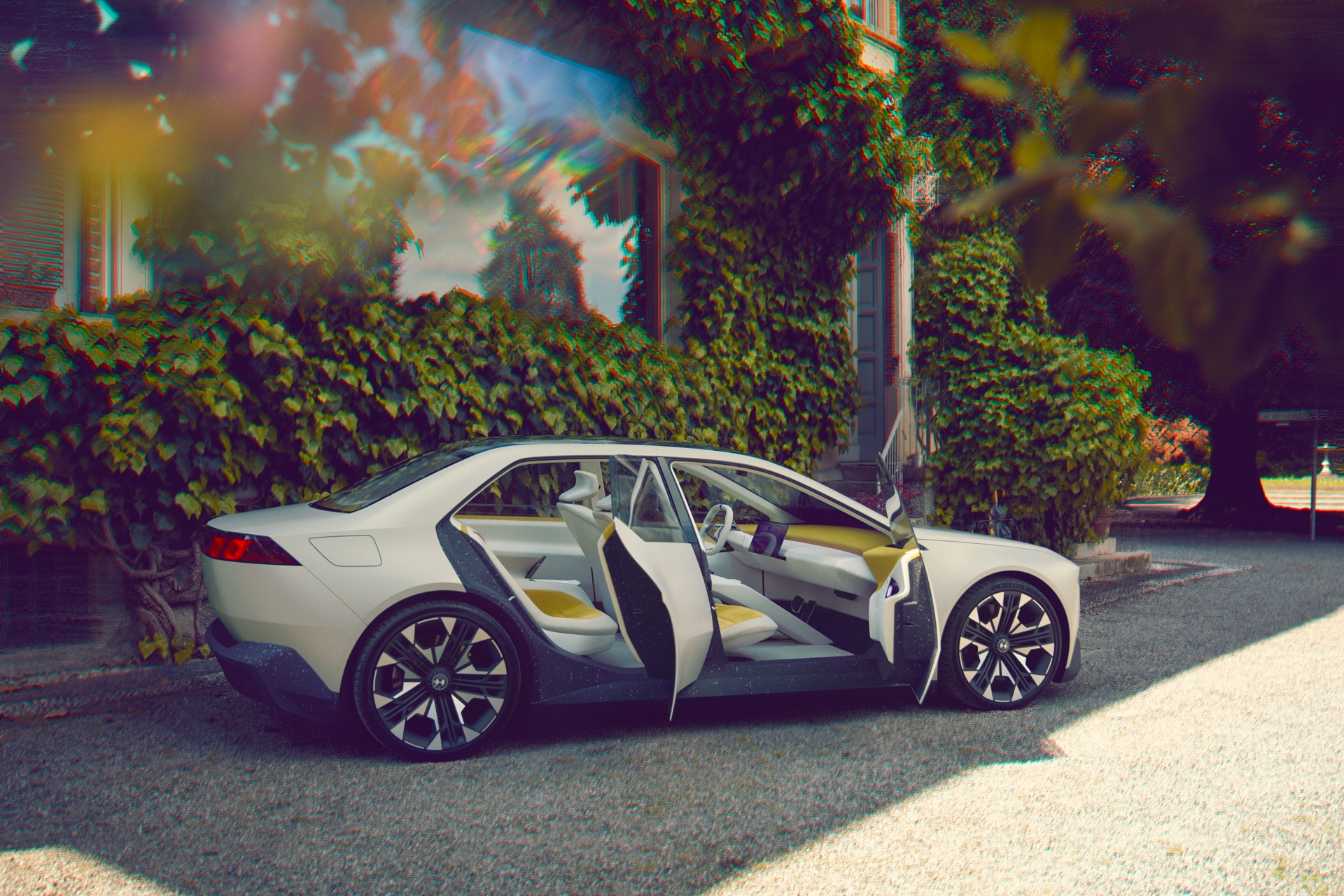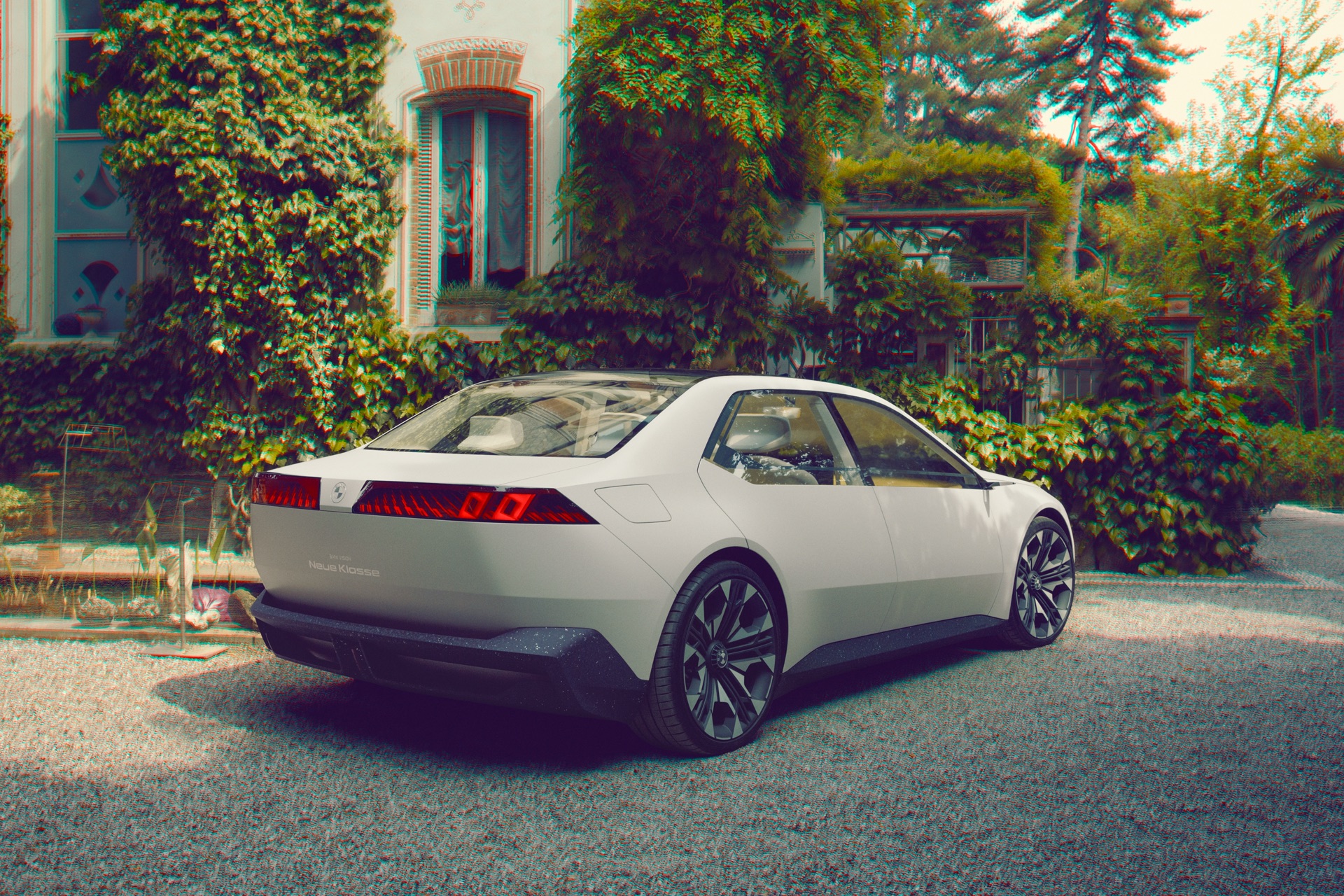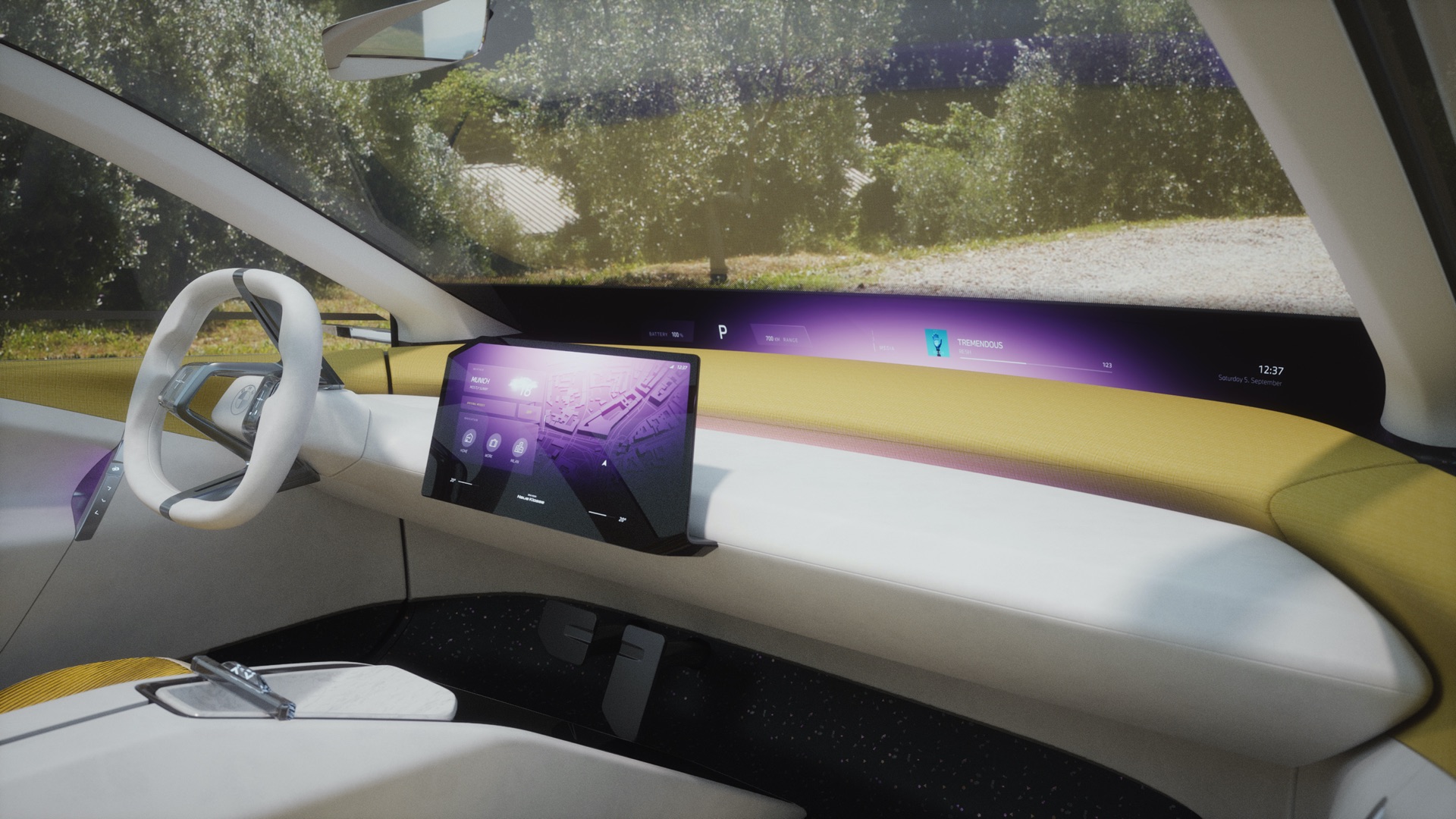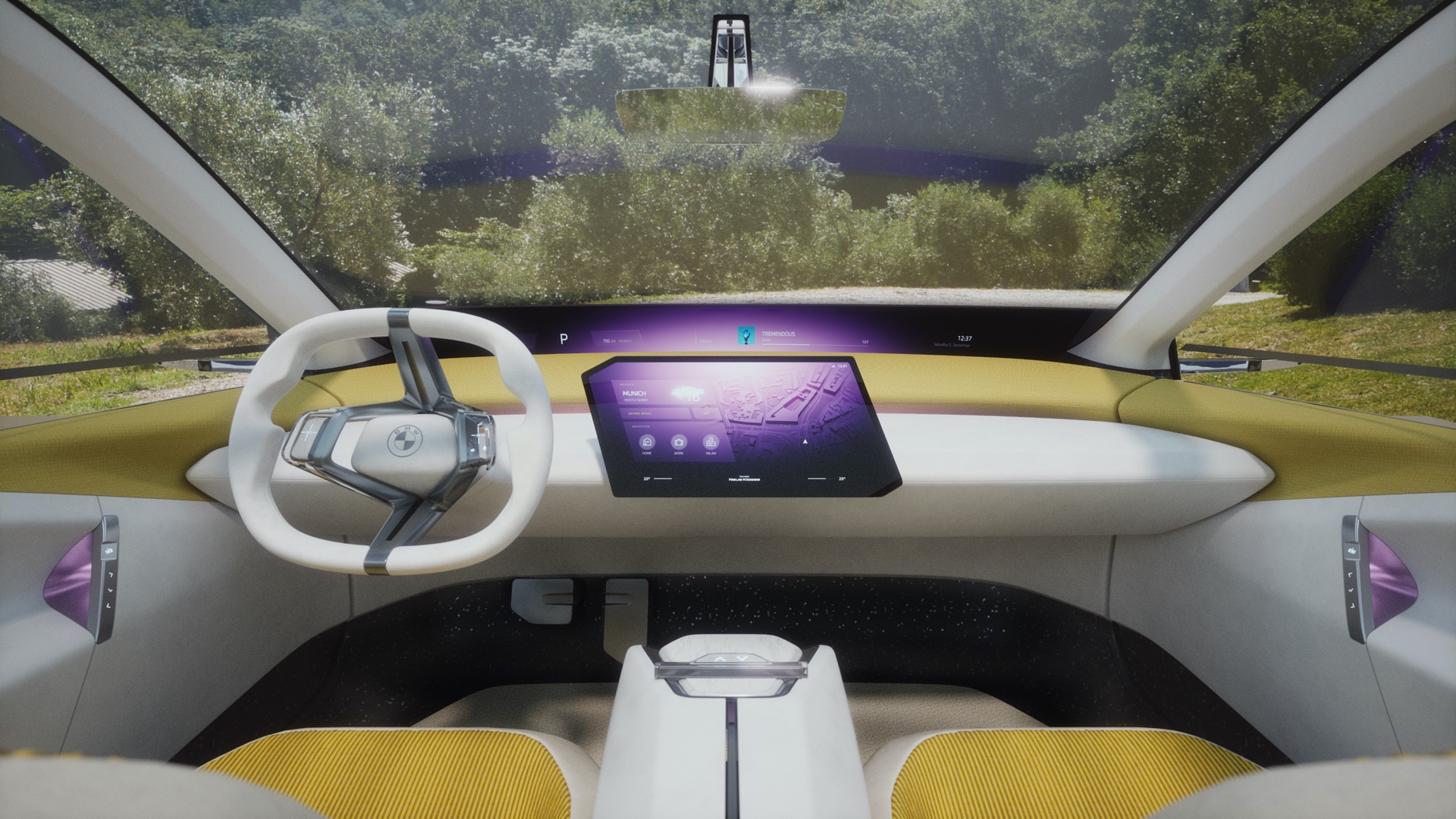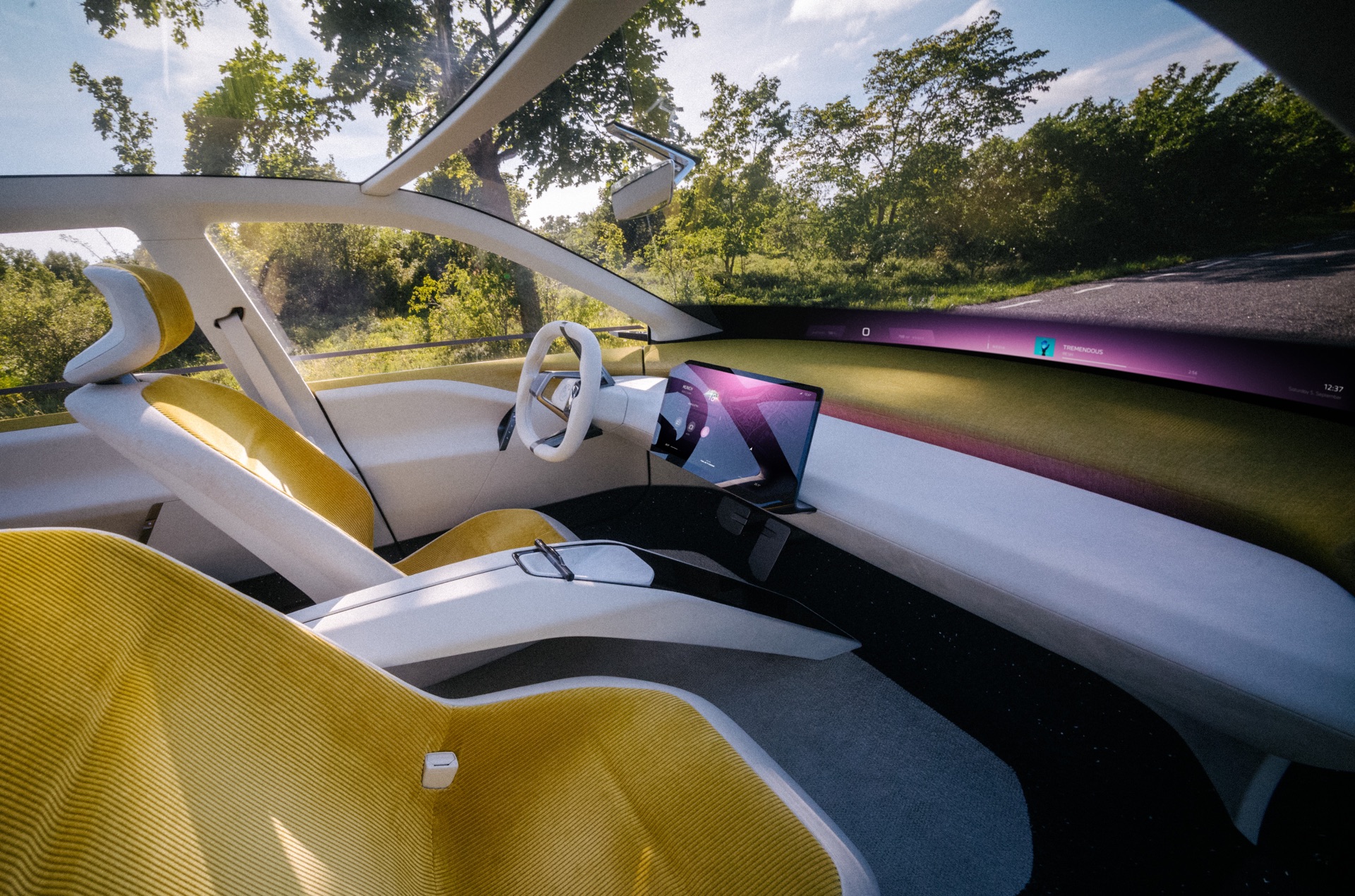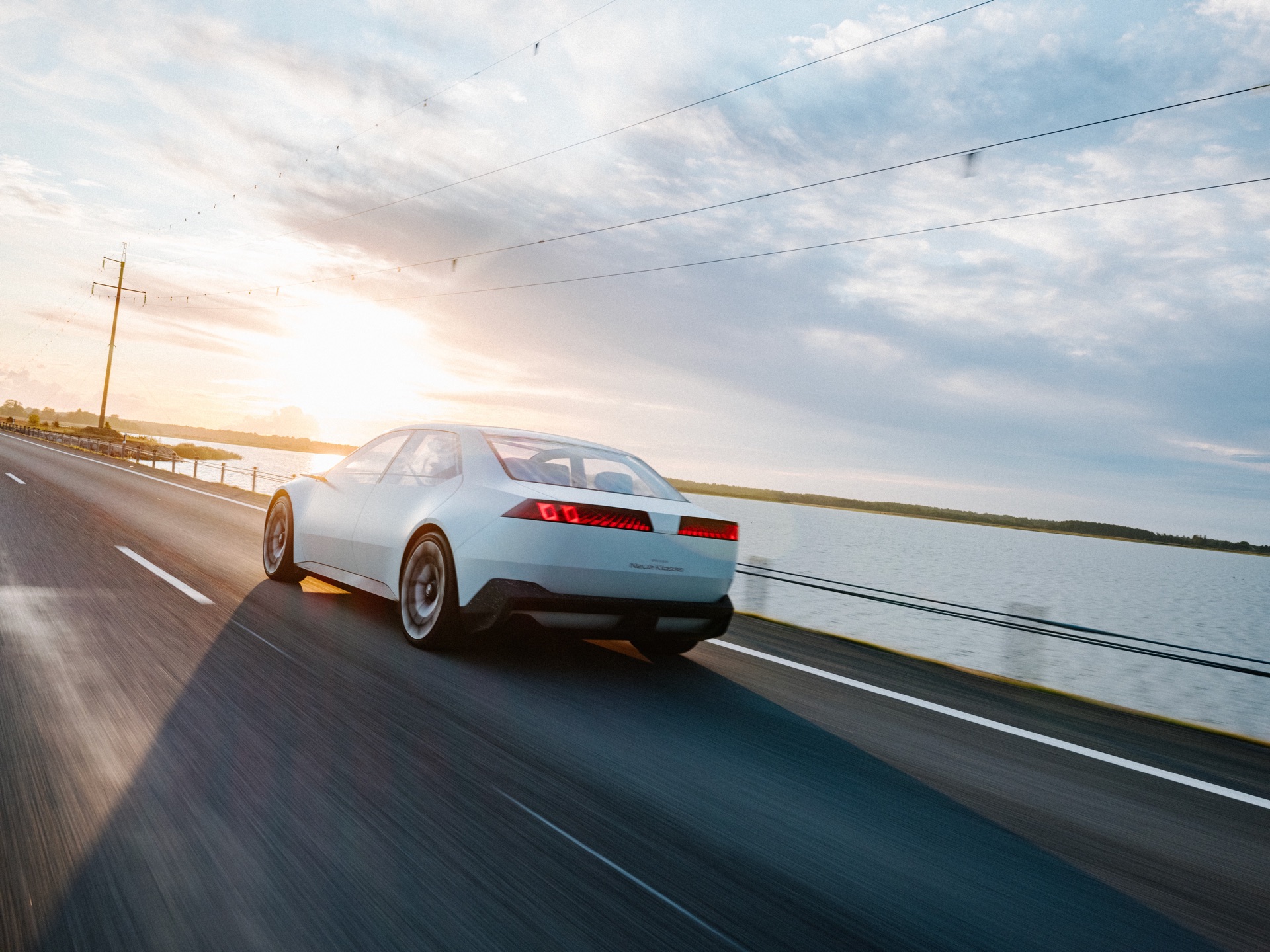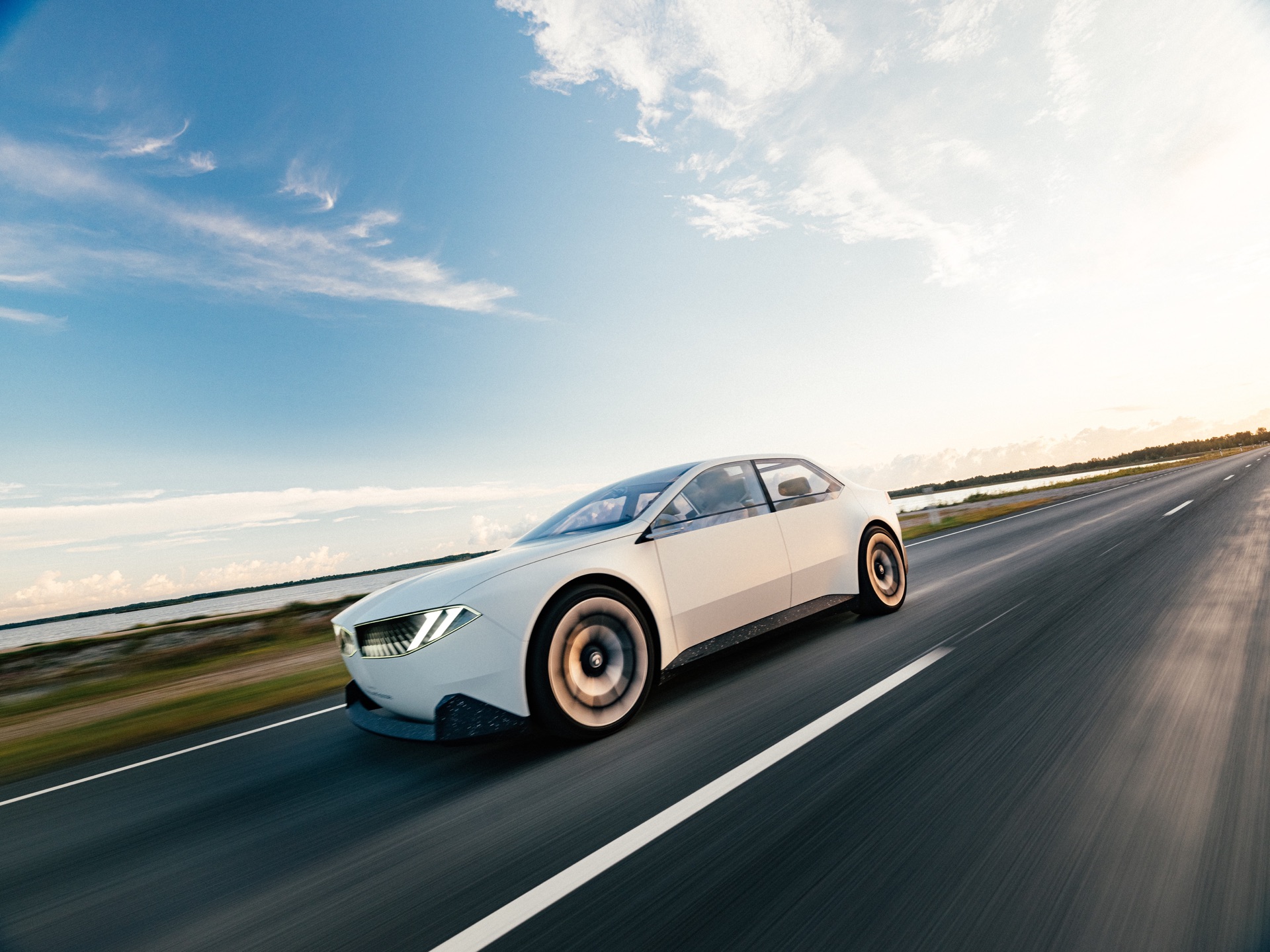The concept study of the BMW Vision Neue Klasse, making its debut at IAA 2023, was previously known as the i Vision Dee at the Consumer Electronics Show (CES) in Las Vegas. The Munich Mobility Show is where things get more concrete for the upcoming 3 Series.
Not just from an automotive perspective, the concept study of i Vision Dee from BMW was the star of this year’s CES in Las Vegas. The model on stage at the eye-catching show in the gambling city somewhat shyly bore the name Dee. However, things are getting more concrete at the International Motor Show in Munich. Lighting units, interior, and central display have come together, and it’s gradually becoming clear that the BMW Vision Neue Klasse offers a very tangible look at the forthcoming BMW 3 Series. “We’re two steps ahead of the future: With the Neue Klasse, we’ll bring mobility for the next decade to the roads as early as 2025 – and lead BMW into a new era,” says BMW CEO Oliver Zipse.
The new naming of the Neue Klasse seems somewhat strained, not just in international parlance. It is supposed to bridge back to the mid-class model of the 1960s. In the early ’60s, BMW, after tumultuous times and almost being acquired by Mercedes, made a fresh start with its “new class,” which was more like a project name. At that time, it revolved around the BMW 1800, offering between 90 and 130 horsepower – a lot of dynamics for a sporty family sedan of its time.
The design hasn’t changed much compared to the BMW i Vision Dee, but with a nearly complete interior, front and rear lighting units, and further technical refinements, the concept study provides more specific indications of where the journey for the new electric model from Munich will go in two years. “30% more range, 30% faster charging, 25% more efficiency – we’re making a significant technological leap with the new class,” says BMW Development Board member Frank Weber, “the new class will permeate all model generations.”
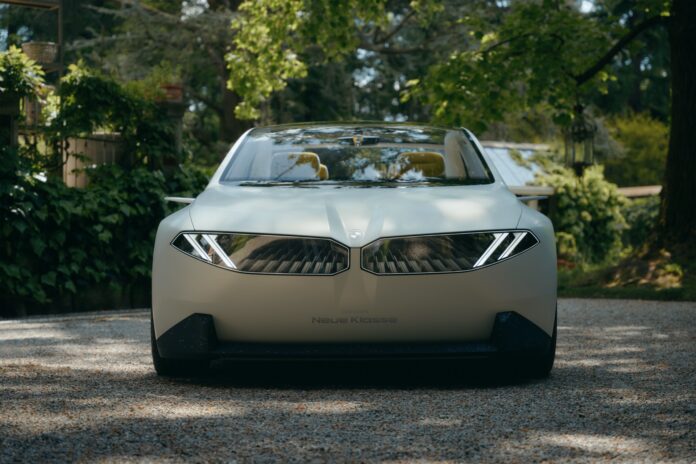
This hopeful contender aims to introduce a completely new era for BMW – in terms of operation, recycling, raw materials, and design. For the first time, the Bavarians are introducing a large display element called Panoramic Vision as a projection surface on the windshield, which complements the standard instruments and central display and catapults the head-up display into a new era.
Inside, there’s plenty of room for four and later in the production model for five people. Reduced weight, along with extensive measures in aerodynamics, should ensure that the production vehicles of the 3 Series successor meet the efficiency requirements.

Regarding the drives, the next generation of current electric motors will be available in the BMW i3. The vehicles will come with rear-wheel and all-wheel drive, providing between 200 and over 500 horsepower, which should not detract from the joy of driving compared to electric models. On the contrary, the upcoming 3 Series will offer performance like no other mid-class model from Munich before. By 2027, a BMW i3M with over 600 horsepower is expected to come to market – obligatorily with all-wheel drive and a top speed beyond 250 km/h – for the first time for an electric BMW.
In terms of efficiency, Frank Weber anticipates improvements of around 25% due to new battery technology and particularly intelligent onboard electronics. This means that the current WLTP standard consumption of the upcoming 3 Series, in relation to the current BMW i4 (16 – 19 kWh / 100 km), should reduce to 12 to 15 kWh per 100 km. Moreover, an 800-volt onboard electrical system should be introduced in the next generation of BMW i3, and thus in all models of the new class, which would increase the current charging speeds from a maximum of 200 kW to 250 and later 300 kW.


